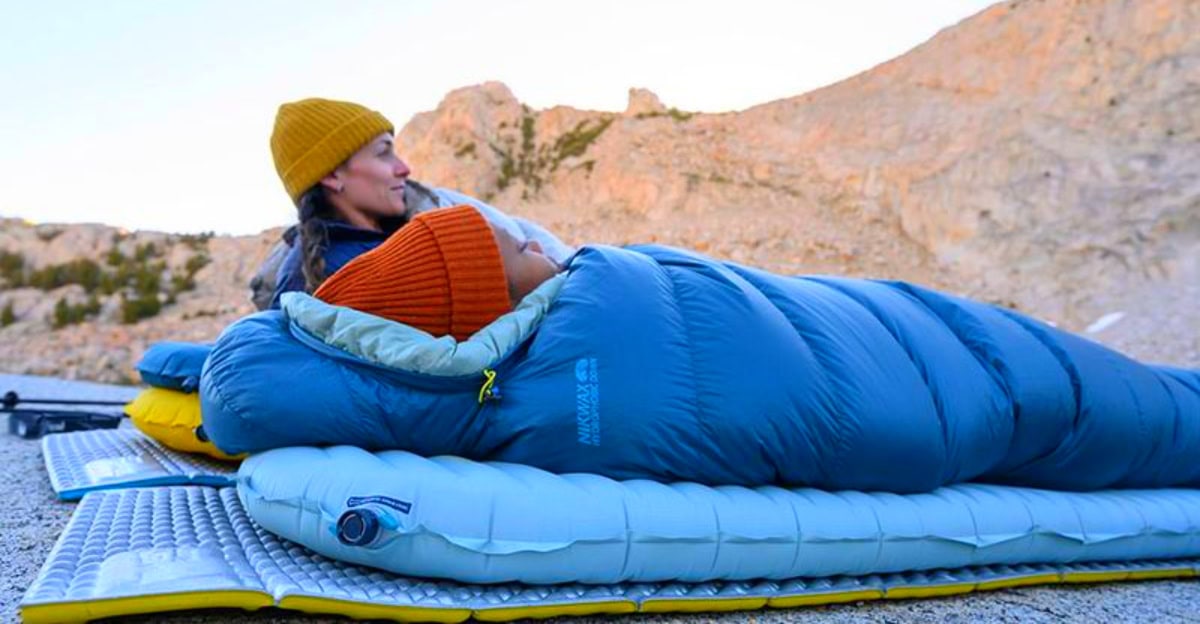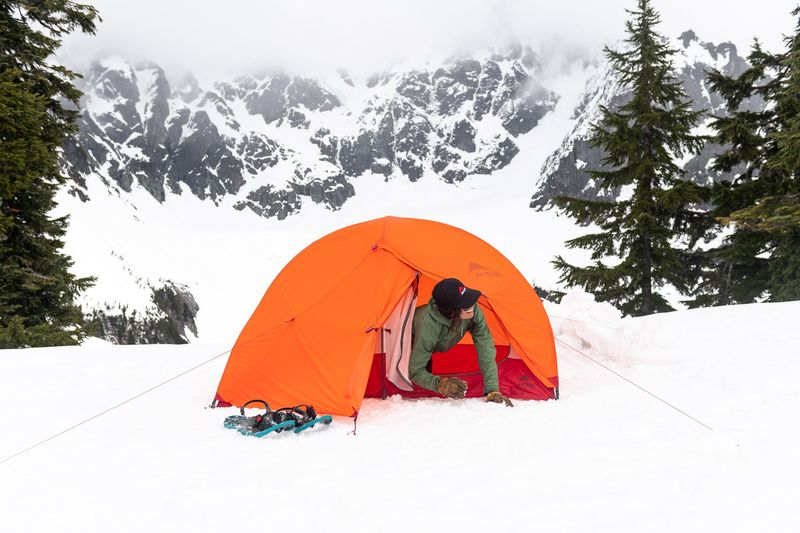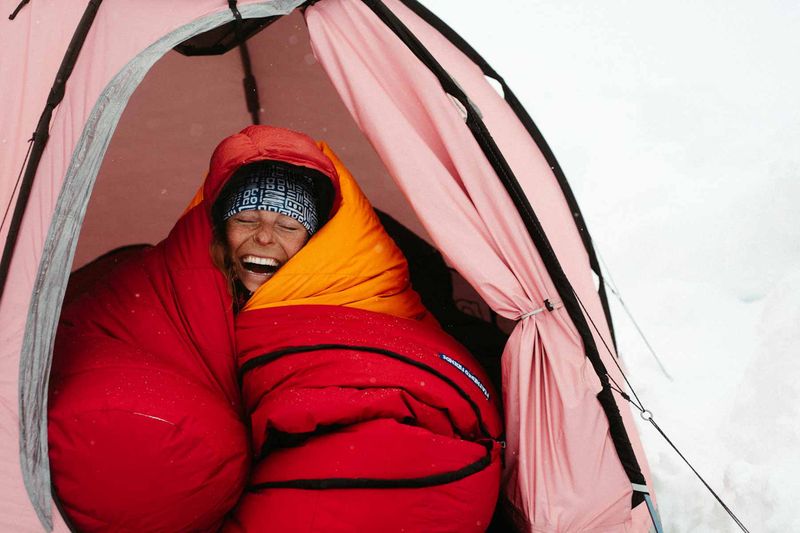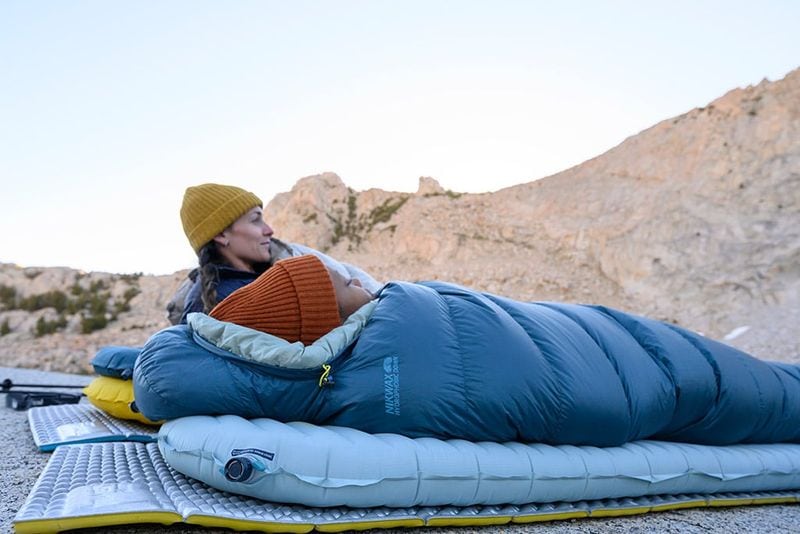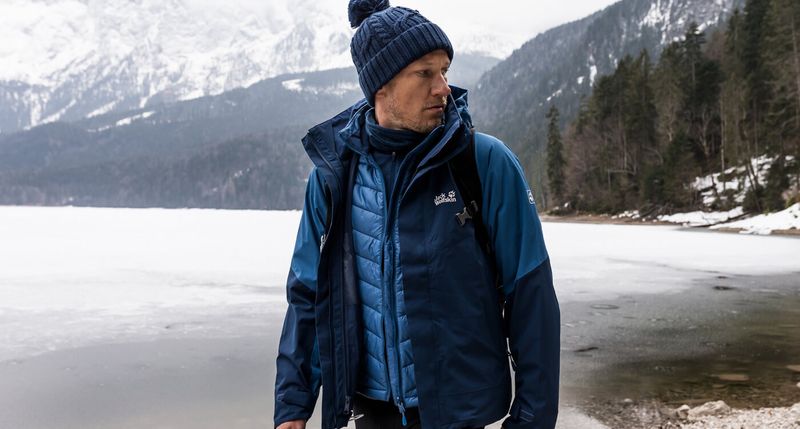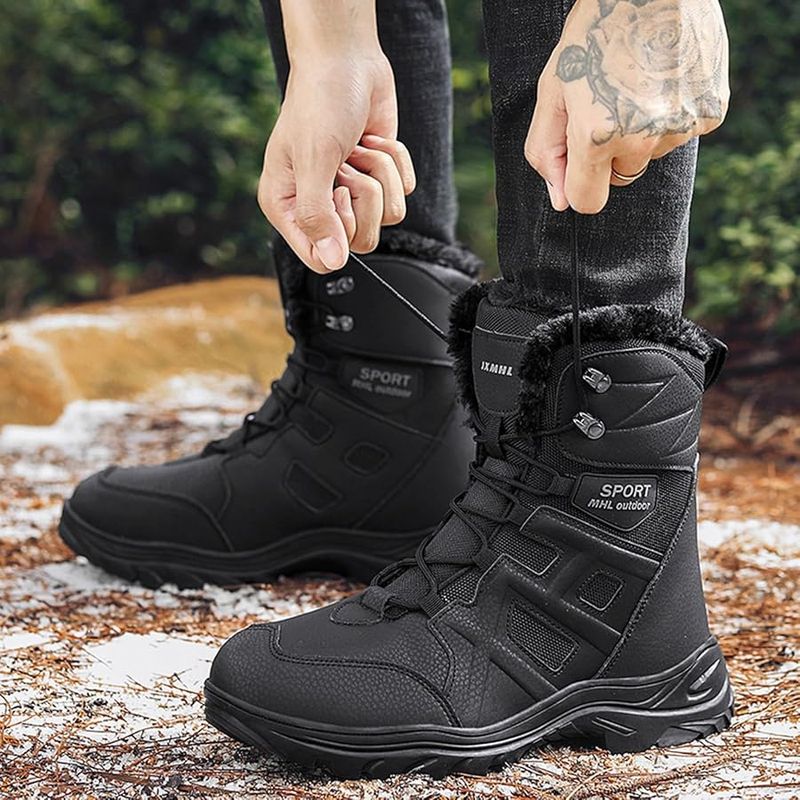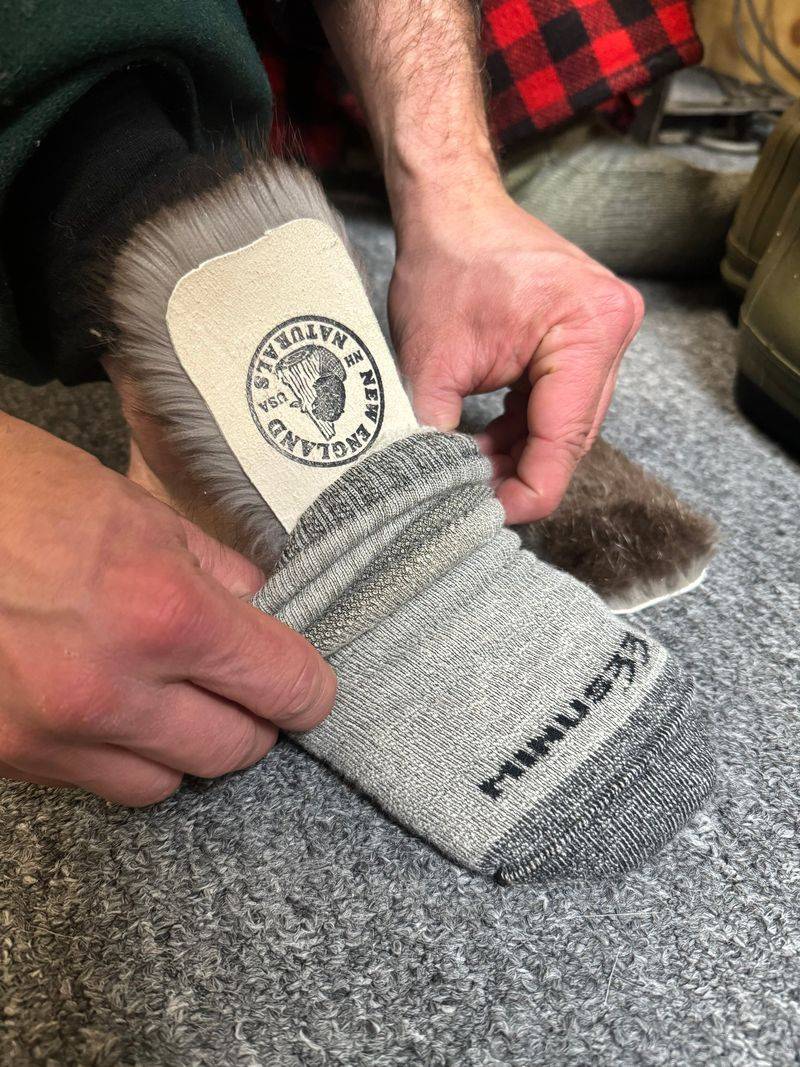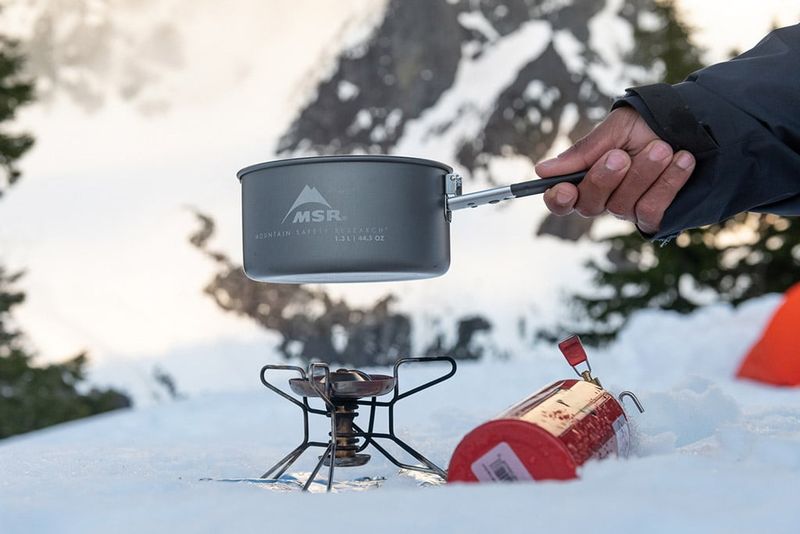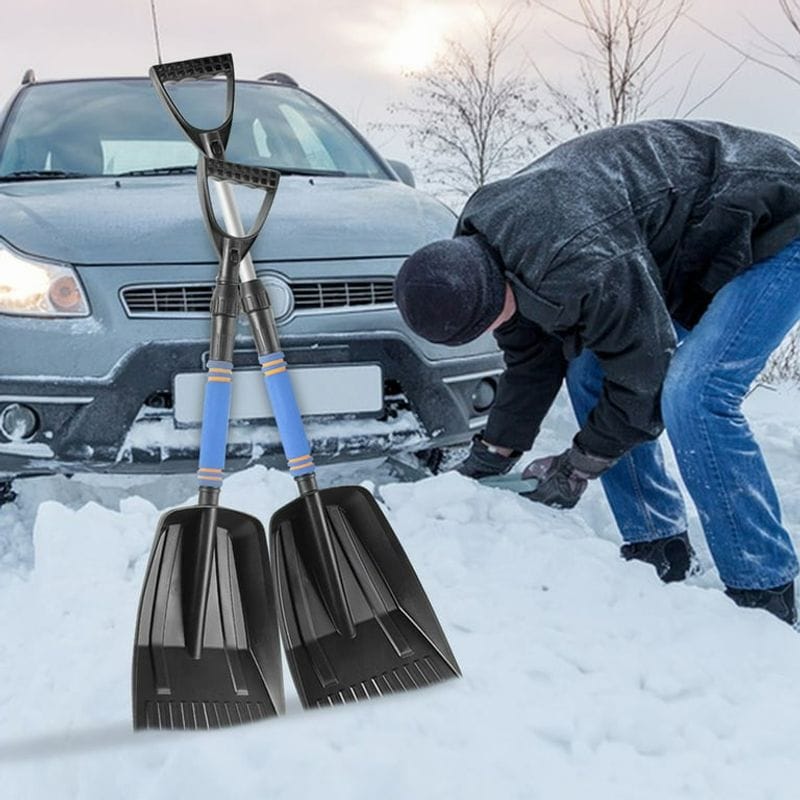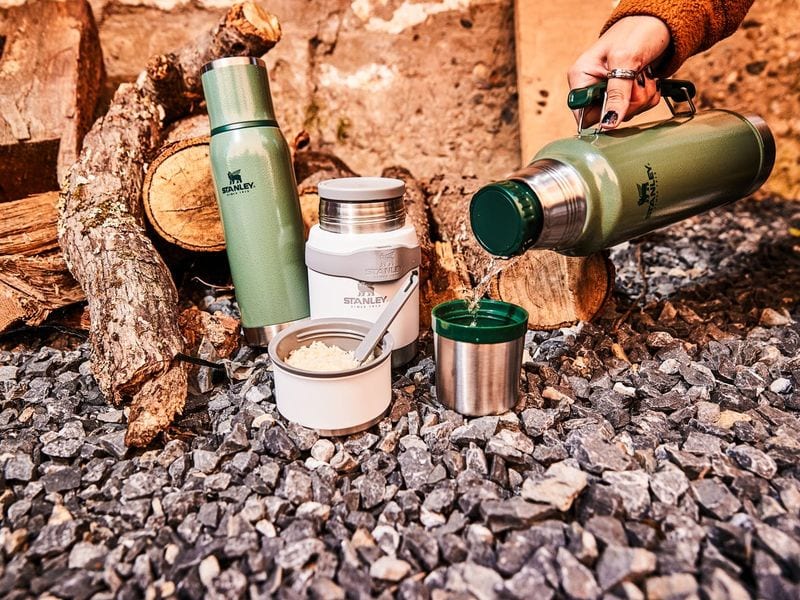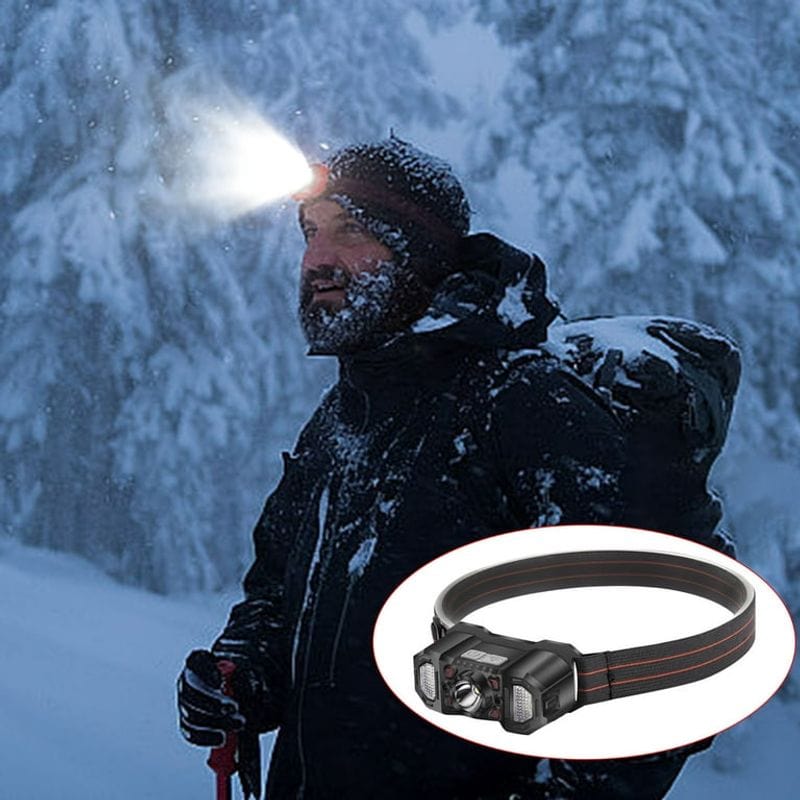Winter camping transforms the great outdoors into a magical wonderland, but freezing temperatures can quickly turn your adventure into a dangerous situation. Staying warm isn’t just about comfort – it’s about survival when temperatures drop below freezing. With the right gear tested in real winter conditions, you can enjoy cozy nights under starry skies while snow falls around your campsite.
1. Four-Season Insulated Tent
Wind howling at 30 mph while snow piles up outside won’t bother you inside a properly designed four-season tent. Unlike regular camping tents, winter models feature reinforced poles and specialized fabrics that handle heavy snow loads.
The MSR Access 2 stands out with its lightweight design and bomber construction. Its steep walls shed snow effectively while maintaining interior warmth.
Double-wall construction creates an insulating air layer that keeps your body heat from escaping. Quality four-season tents cost more upfront but prevent hypothermia when temperatures plummet unexpectedly during overnight storms.
2. Sub-Zero Rated Sleeping Bag
Your sleeping bag becomes your lifeline when temperatures drop to dangerous levels during winter nights. Regular sleeping bags fail miserably in sub-zero conditions, leaving you shivering and potentially hypothermic.
The Western Mountaineering Bison GWS handles -20°F with ease thanks to premium goose down insulation. Its mummy design traps warm air while preventing heat loss through gaps.
Down-filled bags offer superior warmth-to-weight ratios compared to synthetic alternatives. Water-resistant treatments keep insulation dry when condensation builds up inside your tent during long winter nights.
3. High R-Value Sleeping Pad
Ground temperatures steal body heat faster than cold air, making insulated sleeping pads absolutely critical for winter survival. R-values measure insulation effectiveness—winter camping demands pads rated 4.0 or higher.
The Therm-a-Rest NeoAir XTherm delivers an impressive R-value of 7.3 using reflective ThermaCapture technology. Its internal baffles prevent cold spots while maintaining comfort.
Closed-cell foam pads work as backup options but sacrifice comfort for reliability. Combining both types creates an unbeatable insulation system that keeps you warm even when temperatures hit extreme lows.
4. Layered Clothing System
Forget single heavy coats—smart winter campers rely on versatile layering systems that adapt to changing conditions throughout the day. Base layers wick moisture away from skin while mid-layers provide insulation.
Patagonia Capilene base layers excel at moisture management, while Arc’teryx Atom LT vests add core warmth without bulk. Waterproof shells complete the system by blocking wind and precipitation.
Merino wool base layers naturally resist odors during multi-day trips. This three-layer approach lets you add or remove pieces as activity levels change, preventing dangerous overheating followed by rapid cooling.
5. Insulated Waterproof Boots
Frostbite attacks extremities first, making quality winter boots essential for safe camping adventures. Cold feet lead to poor decision-making and increased accident risk on icy terrain.
Sorel Caribou boots feature removable felt liners and waterproof rubber construction rated to -40°F. Their aggressive tread patterns provide traction on packed snow and ice.
Thinsulate insulation maintains warmth even when wet, unlike down alternatives that lose effectiveness. Proper boot fit allows wiggle room for thick socks while preventing pressure points that restrict blood circulation during long hiking days.
6. Hand and Foot Warmers
Chemical heat packs provide emergency warmth when your body’s natural heating system struggles against extreme cold. Rechargeable electric warmers offer sustainable heat for extended trips without generating waste.
HotHands disposable warmers activate instantly and maintain steady heat for eight hours. Electric alternatives like Zippo rechargeable models provide consistent warmth with USB charging capability.
Proper placement inside gloves and boots maximizes effectiveness without causing burns. Smart campers carry extras since warmers can mean the difference between comfortable sleep and dangerous hypothermia during unexpected temperature drops or gear failures.
7. Liquid Fuel Camping Stove
Canister stoves fail when temperatures drop below freezing, leaving you without hot food or water when you need them most. Liquid fuel stoves perform reliably in extreme conditions.
The MSR WhisperLite International burns multiple fuel types including white gas and kerosene. Its simple design field-strips for maintenance using included tools.
Liquid fuels don’t lose pressure in cold weather like compressed gas canisters. Hot meals and drinks provide essential calories and morale during challenging winter conditions. Reliable stove performance can literally save lives when hypothermia threatens during extended cold exposure.
8. Lightweight Snow Shovel
Snow management becomes critical for campsite safety and comfort during winter adventures. Collapsible shovels clear tent platforms while enabling emergency shelter construction when conditions deteriorate rapidly.
Aluminum models balance weight and durability for backpacking applications. Telescoping handles extend for leverage while collapsing for pack storage.
Digging snow kitchens protects stoves from wind while creating comfortable cooking areas. Emergency situations may require rapid snow cave construction for survival shelter. Quality shovels feature reinforced blade connections that won’t fail under stress when you need them most for safety-critical tasks.
9. Insulated Water Bottles
Dehydration strikes quickly in cold weather as your body works harder to maintain core temperature. Standard water bottles freeze solid overnight, leaving you without essential hydration come morning.
Vacuum-insulated stainless steel bottles keep liquids unfrozen for 24+ hours in sub-zero conditions. Wide mouths accommodate hot drinks and make cleaning easier after use.
Hot beverages provide internal warming while contributing to daily fluid intake requirements. Some campers fill bottles with boiling water before bed, using them as foot warmers that provide morning hydration. Quality insulation prevents dangerous ice expansion that cracks inferior bottles.
10. Cold-Weather Headlamp
Winter days end early, leaving campers in darkness for up to 14 hours depending on latitude and season. Standard batteries lose power rapidly in freezing temperatures, potentially leaving you stranded without light.
LED headlamps with lithium batteries maintain brightness in sub-zero conditions. Models featuring red light modes preserve night vision while conserving battery power.
Rechargeable options with USB charging reduce waste while providing reliable performance. Smart campers carry spare batteries in warm pockets since cold kills battery life quickly. Hands-free lighting enables safe navigation and essential camp tasks during long winter nights when mistakes become dangerous.
